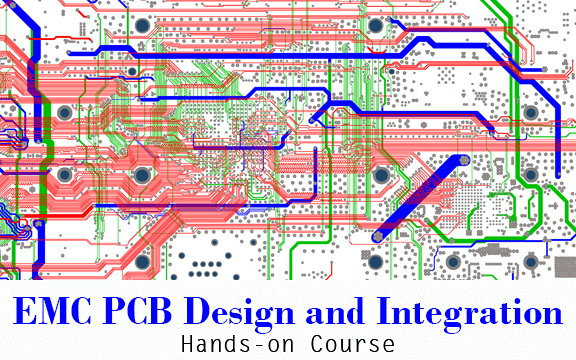Have you ever sat and wondered why your electronic gadgets act so erratically, and sometimes seem to interfere with one another? It could be due to EMC in PCB design.
This complex word stands for Electromagnetic Compatibility and understanding it is very important because you want your PCBs to work smoothly in their electromagnetic environment.
If you have issues with EMI or just want to make your electronics more reliable, then this is the article for you. In this guide, we are going to thoroughly discuss everything about EMC in PCB design and give you strategies and practical tips for efficient PCB designing.
So let’s start.
Understanding EMC in PCB Design

EMC is an important part of the PCB design that ensures the printed circuit board will work as designed in the electromagnetic environment.
It involves designing PCBs in such a way that they neither generate excessive electromagnetic interference (EMI) that would disturb the operation of other electronic appliances, nor would they become highly susceptible to electromagnetic interference from the outside, leading to a malfunction.
Proper design practices and standards, when followed, can limit EMI emissions and enhance immunity on PCBs from external EMI sources.
Before discussing those specific design practices to achieve EMC, you must first understand the relationship of EMI to EMC.
The Relationship Between EMI and EMC
The relationship between Electromagnetic Interference (EMI) and Electromagnetic Compatibility (EMC) is fundamental in PCB design, as it dictates the ability of electronic devices to function correctly in their intended electromagnetic environment.
EMI is an electromagnetic disturbance that can wreak havoc on electronic circuits. It’s typically caused by radiation or conduction from one device to another, leading to potential malfunctions and disruptions in operation.
EMC, on the other hand, acts as the guardian of electronic devices’ functionality. It’s the measure of a device’s ability to operate within its environment without causing or falling victim to EMI.
Essentially, it’s a delicate balance, ensuring that a device neither emits interference beyond acceptable limits nor is vulnerable to disruptions from external sources of EMI.
Achieving EMC in PCB design requires meticulous planning and implementation of design strategies aimed at mitigating EMI risks. Let’s discuss these strategies in detail.
Practical Guidance for Designing PCBs with Good EMC Characteristics
So here are some practical tips for designing PCB with good EMC characteristics:
- Component Selection
Careful selection of components is crucial in achieving EMC in PCB design. When choosing components, prioritize those with minimal EMI emissions. Shielded components, for example, feature built-in shielding mechanisms that help contain electromagnetic radiation, reducing the risk of interference with neighboring components.
Additionally, opting for low-noise regulators can minimize voltage fluctuations and ripple, further mitigating EMI risks.
By selecting components specifically designed to operate efficiently within their intended electromagnetic environment, designers can significantly reduce the likelihood of EMI interference, ensuring the reliability and performance of the electronic device.
- Proper Layout Techniques
The layout of components and traces on a PCB is instrumental in achieving good EMC characteristics. Minimizing trace lengths reduces the loop area, decreasing the potential for electromagnetic radiation.
Maintaining ground plane integrity ensures a low impedance path for return currents, reducing noise coupling and enhancing EMC. Properly placing decoupling capacitors near power pins of integrated circuits helps mitigate voltage fluctuations and noise, improving signal integrity.
By adhering to these layout techniques, designers can minimize EMI propagation and susceptibility, resulting in more robust and reliable PCB designs.
- Grounding and Shielding
Establishing a robust grounding scheme is essential for EMC. A well-designed grounding system provides a low-impedance path for return currents, minimizing voltage differentials and reducing the risk of EMI emissions.
Additionally, shielding critical components from external EMI sources helps prevent electromagnetic interference from disrupting the operation of sensitive circuits. Conductive enclosures or shielding cans can effectively contain electromagnetic radiation, safeguarding components from external interference.
By implementing proper grounding and shielding techniques, designers can enhance the EMC performance of their PCBs, ensuring reliable operation in challenging electromagnetic environments.
- Signal Integrity
Maintaining signal integrity is vital for EMC and overall performance. Controlled impedance routing ensures that signals propagate without distortion or reflections, minimizing the risk of electromagnetic interference.
Proper termination techniques, such as matching the characteristic impedance of transmission lines, prevent signal reflections that could lead to EMI issues.
By ensuring clean and stable signal transmission, designers can reduce the likelihood of EMI emissions and susceptibility to external interference, enhancing the overall EMC performance of the PCB.
Incorporating these practical strategies into your PCB design process can significantly enhance EMC characteristics, ensuring reliable operation and minimizing the risk of electromagnetic interference.
By taking a proactive approach to EMC while also following EMC compliance, you can create robust electronic devices that perform optimally in their electromagnetic environment.
But you must be wondering what is EMC compliance. Don’t worry, let’s discuss this in detail below.
EMC Compliance
EMC compliance is a critical aspect of PCB design, ensuring that electronic devices meet regulatory standards for electromagnetic compatibility.
Regulatory bodies such as the FCC (Federal Communications Commission) set specific standards for acceptable levels of electromagnetic emissions from electronic devices.
Compliance with these standards is essential for ensuring that devices do not cause harmful interference to other electronic equipment or communication systems.
To achieve EMC compliance, PCB designers must conduct thorough testing and validation of their designs. This often involves subjecting the PCB to various electromagnetic compatibility tests to assess its performance under different operating conditions.
These tests may include radiated emissions testing, conducted emissions testing, and immunity testing to evaluate the device’s susceptibility to external interference.
By adhering to EMC compliance standards, PCB designers can ensure that their electronic devices meet the necessary requirements for electromagnetic compatibility, minimizing the risk of interference and ensuring reliable operation in diverse environments.
Additionally, compliance with EMC regulations is often a prerequisite for obtaining certifications and approvals required for product release and market entry. Therefore, prioritizing EMC compliance is essential for ensuring the success and marketability of electronic devices.
FAQs
1.What role does proper grounding play in achieving EMC in PCB design?
Proper grounding is essential for EMC in PCB design as it provides a low-impedance path for return currents, reduces noise coupling, and minimizes the risk of ground loops. A well-designed grounding system enhances EMC performance and helps mitigate electromagnetic interference.
2.Can EMC issues arise from PCB layout mistakes?
Yes, EMC issues can arise from PCB layout mistakes such as inadequate ground plane design, improper signal routing, insufficient decoupling, and poor placement of components. These mistakes can lead to increased EMI emissions and susceptibility to external interference.
3.What are some tools and resources available for EMC analysis and mitigation in PCB design?
There are various simulation software tools available for EMC analysis, such as SPICE-based simulators and electromagnetic field solvers. Additionally, industry guidelines, textbooks, and online resources provide valuable information and best practices for EMC mitigation in PCB design.
4.How does high-speed signal transmission impact EMC in PCB design?
High-speed signals can generate significant electromagnetic interference due to their fast switching speeds and high frequencies. Proper layout techniques, controlled impedance routing, and signal integrity measures are essential for mitigating EMI issues associated with high-speed signals.
5.How can I address EMC issues in mixed-signal PCB designs?
Mixed-signal PCB designs, which include both analog and digital components, require special attention to EMC considerations. Proper partitioning, isolation techniques, and careful routing of analog and digital signals can help minimize EMI and ensure EMC compatibility in mixed-signal designs.
Conclusion
In conclusion, understanding the EMC in PCB design is crucial for ensuring the smooth operation and reliability of electronic devices. EMC involves designing PCBs to operate effectively within their electromagnetic environment, minimizing electromagnetic interference or EMI while maximizing immunity to external sources of interference.
By implementing specific design strategies given above, PCB designers can enhance EMC characteristics and minimize the risk of EMI issues.
Additionally, ensuring compliance with EMC regulatory standards is essential for validating the EMC performance of electronic devices and obtaining necessary certifications for market entry.





